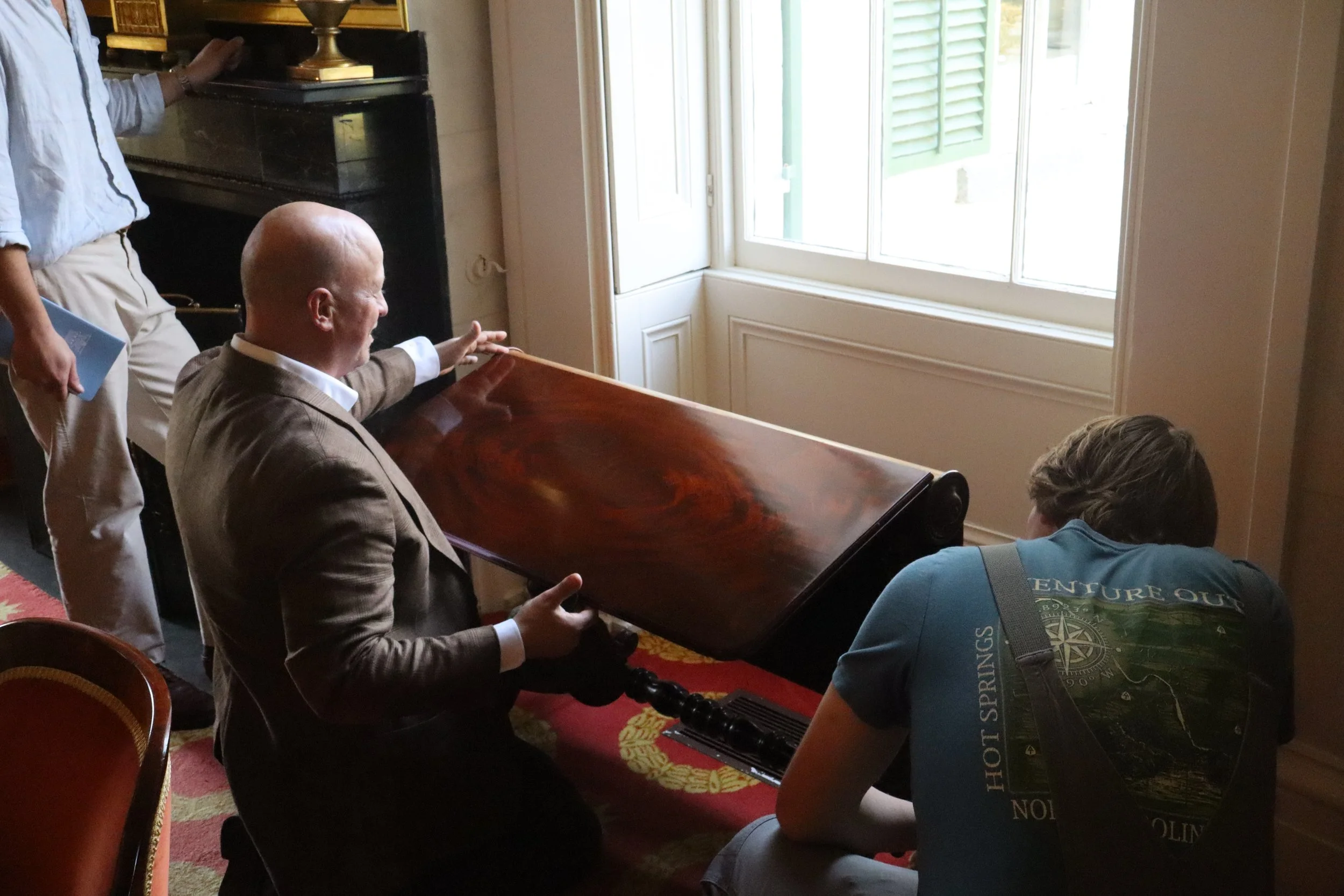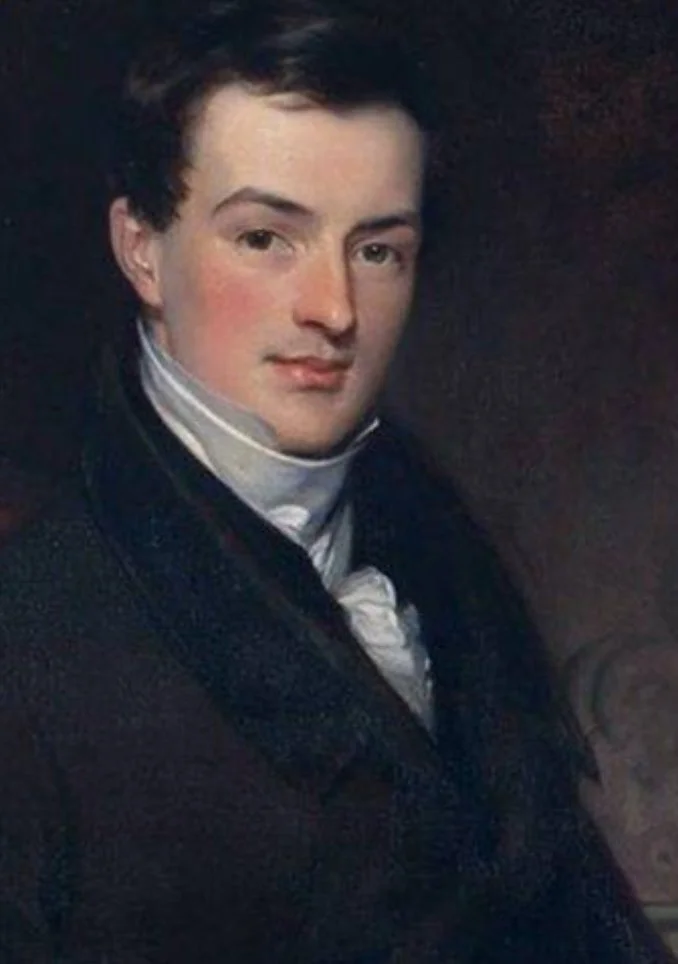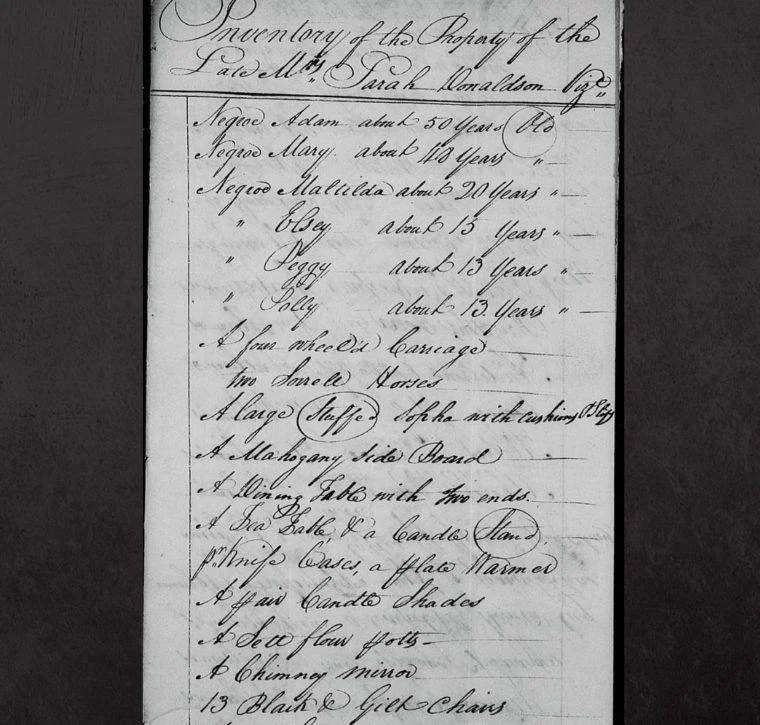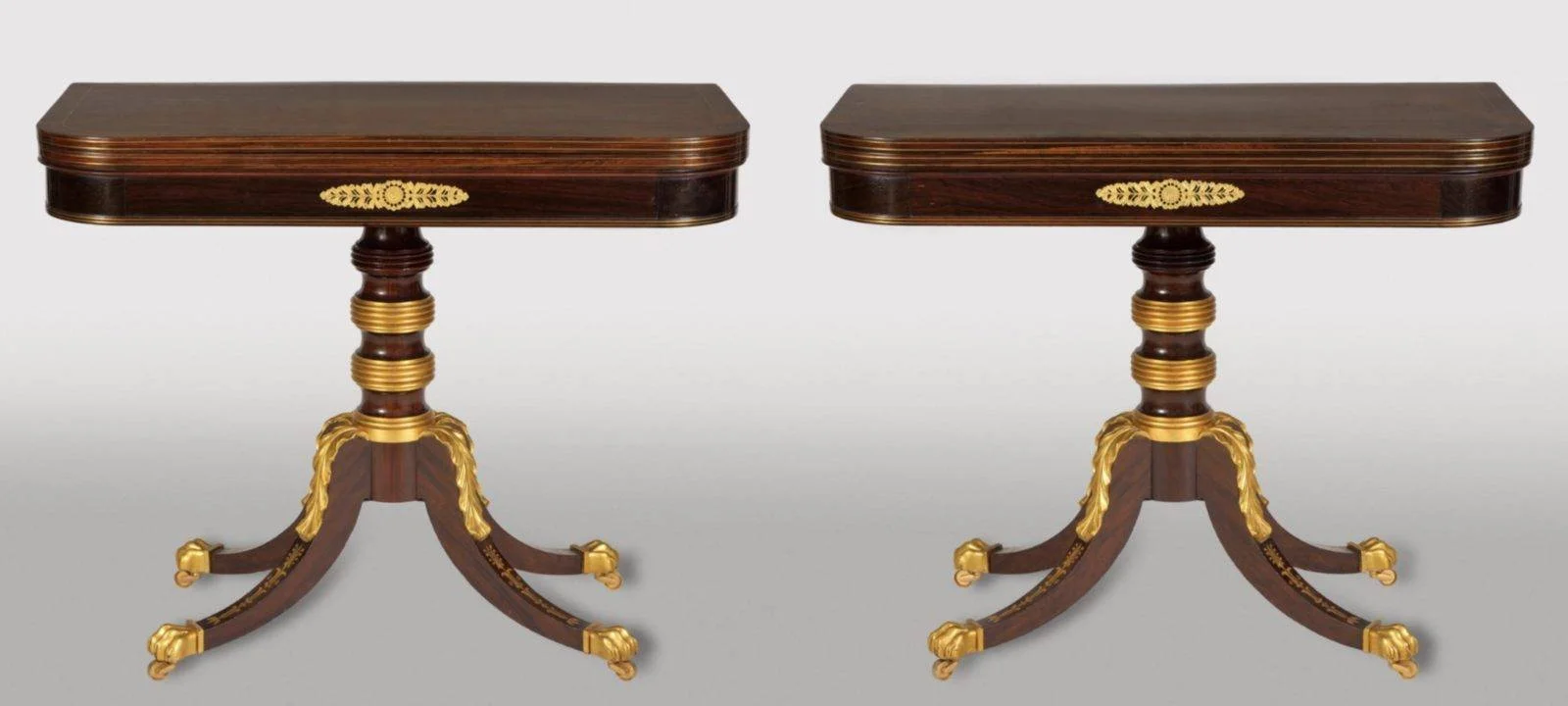“Beyond any other family in the place”: The Donaldsons in Fayetteville, North Carolina
Authors: Grant Quertermous and Robert Leath
Interested in touring some American classics?
Friends of the Richard Hampton Jenrette Foundation and its sites will recognize the name Robert Donaldson, Jr., for his long residency of and extraordinary impact on Edgewater in the Hudson River Valley.
Robert Donaldson, Jr. (1800-1872) was a gentleman farmer, entrepreneur, patron of the arts, and owner of Edgewater from 1852 until his death in 1872. While he lived most of his adult life in New York, he was born and spent his youth in Fayetteville, North Carolina, a town where many members of his family continued to reside and where he owned property. For the rest of his life, Donaldson used his wealth and influence to support the town’s educational and religious institutions and to advocate for municipal improvements. Located in Cumberland County, Fayetteville was the second largest town in the state behind New Bern at the time of Donaldson’s birth in the summer of 1800. Its location on the Cape Fear River and proximity to the port city of Wilmington, made Fayetteville a primary center of trade and commerce for inland North Carolina and home to mercantile firms like the one owned by Robert’s father, Robert Donaldson, Sr. (1762-1808).
After working in the Caribbean and Virginia, Robert Donaldson Sr. moved to North Carolina, arriving in Fayetteville just before the enumeration of the 1790 Federal Census. He opened a store in partnership with his brother, James Donaldson, and soon began acquiring property, including a town lot on the south side of Cross Creek, on which he would later build a house.
In March of 1795, Robert Donaldson Sr. married twenty-year-old Sarah Paris Henderson, the daughter of another native Scot living in North Carolina, John Henderson of Chatham County. Following their marriage, Robert and Sarah Donaldson had six children and made their home on Fayetteville’s Union Street (present-day Anderson Street) in a large two-story house with a hipped roof and Ionic pilasters on the front façade.
Detail of Charles Robert Leslie’s 1820 portrait of Robert Donaldson. Jenrette Foundation Collection 2014.019. Bequest of Mary Stuart Cromwell Allison.
Children of Robert Donaldson Sr. and Sarah Henderson Donaldson
Sarah Donaldson Adam (1796-1819)
Isabella Donaldson (1797-1887)
Robert Donaldson Jr. (1800-1872)
James Donaldson (1802-1872)
Eliza Donaldson Hooper (1804-1825)
Joanna Donaldson Bronson (1806-1876)
According to Donaldson’s biographer, Jean Bradley Anderson, the dwelling was one of the largest and most sophisticated houses in the town at the time of its construction.
In 1806, Donaldson Sr. sold his share of the North Carolina business and moved the family to New York City where he planned to expand his mercantile enterprise. However, after just two years of living in Manhattan, the Donaldsons returned to Fayetteville as Mrs. Donaldson’s fragile health couldn’t withstand the climate of the city.
Robert Donaldson Sr. House, Fayetteville, c. 1900. Courtesy Carolinian on the Hudson
“Inventory of the property of the late Mrs. Sarah Donaldson,” March 1809, North Carolina Estate Files, 1663-1979, accessed via Familysearch.org
The year 1808 was a tragic one for Robert Jr. and his five siblings, as it was the year in which both of their parents died within the space of a just few months. Donaldson Sr. died on July 1, 1808 while traveling to Norfolk. He was buried in Petersburg’s Blandford Cemetery where a classical obelisk marks his grave. Exactly three months later, their mother Sarah Henderson Donaldson, died in Fayetteville on October 1st. She was thirty-five years old. The Minerva, a Raleigh newspaper, eulogized the widow Donaldson, noting “her suavity of manners and mildness of disposition, will be a lasting monument to the rising generation—In her were concentrated all the qualities which adorn the female sex.” She was buried in Fayetteville’s Cross Creek Cemetery. An inventory of household contents taken after Sarah Donaldson’s death provides clues about the furnishings within the house where Robert Jr. spent his early childhood. Among the furniture was a “large stuffed sopha with cushions,” a “Mahogany side board”, a three-part dining table, a tea table, candle stands, a pair of knife boxes, and a set of thirteen black and gilt painted fancy chairs. Donaldson Sr.’s library included 98 volumes in total. Among its contents were books about religion and history as well as works of fiction such as Henry Fielding’s novel, The History of Tom Jones. A collection of poems by Robert Burns and a volume of essays by theologian John Knox reflected the Donaldsons’ Scottish origins, adherence to Presbyterianism, and reverence for the doctrines of the Church of Scotland. All the household contents listed on the inventory were sold by the executors of Mrs. Donaldson’s estate, except for her husband’s gold watch and seal as well as a set of the Encyclopedia Britannica named in Donaldson Sr.’s will as bequests to his eldest son Robert.
Sarah Donaldson Adam and John Adam House, Fayetteville, N.C., attributed to architect William Nichols, c. 1820
Following the nearly simultaneous deaths of their parents, the four youngest Donaldson children were taken in by their maternal aunt and uncle, Joannah Henderson McMillan and her husband John, who also resided in Fayetteville. Robert, Jr. and his brother James likely attended Fayetteville Academy, where he would have received a classical education that would prepare him for matriculation at the University of North Carolina.
In 1814, Robert Jr. enrolled at the University of North Carolina at Chapel Hill, spending four years at the institution, and graduating with the class of 1818. Among his classmates and the valedictorian of their graduating class was James K. Polk, future President of the United States.
By the time of Robert Jr.’s return to Fayetteville, his siblings were living in the home of their eldest sister Sarah, and her husband, John Adam, which still stands on present-day Dick Street.
Gravestone of Sarah Donaldson Adam, elder sister of Robert Donaldson in Fayetteville’s Cross Creek Cemetery. Image via Findagrave.com
In March of 1819, Sarah gave birth to a son, whom she named Robert Donaldson Adam, a namesake for both her late father and her brother. Sarah’s health declined, and she died in August 1819, at only 23 years of age. Sarah Donaldson Adam was buried alongside her mother in Cross Creek Cemetery.
By June of 1820, the Donaldson siblings were living once again in their parent’s Union Street house. Their widowed brother-in-law, John Adam, heavily in debt as a result of the Panic of 1819, left his young son in their care and sailed for Jamaica. When the census taker visited the Donaldson house in 1820, it wasn’t Robert, but his younger brother, James Donaldson, who was listed as the head of the household. Robert was already abroad in Europe. He had left Fayetteville two months earlier to travel to England, France, and his family’s native homeland, Scotland.
By February of 1821, Robert Donaldson, Jr. was back in Fayetteville, after an absence of almost a year. Now independently wealthy, he used some of his newly inherited fortune to improve the furnishings of the family’s house.
Grecian Sofa, commissioned by Robert Donaldson, attributed to Duncan Phyfe, New York, NY, ca. 1820. Jenrette Foundation Collection 1980.002
Card Tables commissioned by Robert Donaldson, attributed to Duncan Phyfe, New York, NY, c. 1820-22. Jenrette Foundation Collection 2013.012.01-.02
An invoice from New York cabinetmaker Duncan Phyfe in the summer of 1822 enumerated eighteen pieces of furniture that he had purchased for the household. Among the furnishings that traveled from New York to Wilmington and up the Cape Fear River to Fayetteville were fourteen ornamental rosewood chairs with cushions, a rosewood sofa and a pair of card tables — both now in the CAHPT collection — a pier table, and a center table also extant in the Winterthur Collection. According to family lore, the ship ran aground and the furniture was rescued unharmed!
When family friend Rachel Lazarus visited the Donaldsons in the fall of 1822, she recalled “they live splendidly in Fayetteville beyond any other family in the place.”
Detail of McRae’s “Plate of the town of Fayetteville, North Carolina” (1825) showing Donaldson’s Lafayette Hotel.
Robert Jr. also used some of his inheritance to become what might be described accurately as a real estate developer. He purchased additional property in Fayetteville and, in 1824, began construction of the Lafayette Hotel. Its name honored the French general for whom the town had been re-named in 1783 and who, at the invitation of President James Monroe, made a grand tour of the United States in 1824-25 including a stop in Fayetteville. The brick building was three and a half stories high with elegant trim, a hipped roof, and dormer windows, and stood on the corner of Hay and Donaldson Streets.
Donaldson Academy and Manual Labor School. Lucile Miller Johnson's book, Hometown Heritage, Volume II, published 1992 by Taylor Publishing Company, Dallas, Texas in cooperation with The Woman's Club of Fayetteville, Fayetteville Publishing Company and the Florence Rodgers Charitable Trust.
Light from Astral lamps and chandeliers were reflected in the overmantel mirrors, and General Lafayette was seated in a place of honor at the front of the room on a sofa beneath his portrait. As soon as the General and his entourage departed Fayetteville, Robert Jr. advertised the hotel for lease. It was operated by a tenant until it burned in the May 29, 1831 fire that raged through Fayetteville destroying more than six hundred buildings.
In late 1825 or early 1826, Robert, his brother James, sisters Isabella and Joanna, nephew Robert Donaldson Adam, and their faithful nurse Kitty McDonald, left Fayetteville and relocated to New York City. A short time later, in April of 1827, Robert purchased a house on the Battery at 15 State Street. While he maintained ties to Fayetteville for the rest of his life, returning seasonally to visit family and friends or to check up on his investments and properties, Robert Donaldson Jr. never again resided in the town. By 1847, Donaldson had sold all of his Fayetteville properties except the family’s Union Street house, which he owned for the remainder of his life.
Robert Donaldson Jr.’s lasting legacies to Fayetteville are the building projects that he supported, including the Donaldson Academy, a school charted in 1832 and named in his honor. Robert Jr. donated land and the proceeds from his sale of the Lafayette Hotel for the construction of the school. The Donaldson Academy remained in operation for more than 80 years.
Alexander Jackson Davis, c. 1858. Portrait Collection #P0002, North Carolina Collection Photographic Archives, The Wilson Library, University of North Carolina at Chapel Hill
The greatest beneficiary of his generosity was Fayetteville’s First Presbyterian Church. The family had been affiliated with the congregation since Robert’s childhood, his father had been a founding elder, and it was the church in which Robert Jr. purchased three pews for his family in 1818. The church’s building was a ruined shell following the 1831 fire, and Robert Donaldson Jr. was instrumental in the selection of his friend, the architect Alexander Jackson Davis (1803-1892), to design the new building.
The Federal-style church Davis designed featured a wooden lattice truss roof, an adaptation of the bridge design patented by Davis’s former architectural partner, Ithiel Town, that was surmounted by a commanding steeple. The building was dedicated on August 12, 1832. Forty years later, Robert Donaldson Jr. provided for the church in his will, bequeathing to it the family’s house and surrounding property. The Donaldson house, constructed by Robert’s father in the late 18th century, was used by the church as a parsonage until 1912.
The house was demolished in 1930, but a mantel from the house survives and was installed in the church’s History Room where it remains today. The Donaldson Fund remains as a seven-figure endowment for the historic church’s ongoing care and maintenance.
Mantel from the Donaldson House in First Presbyterian Church, Fayetteville, North Carolina.











